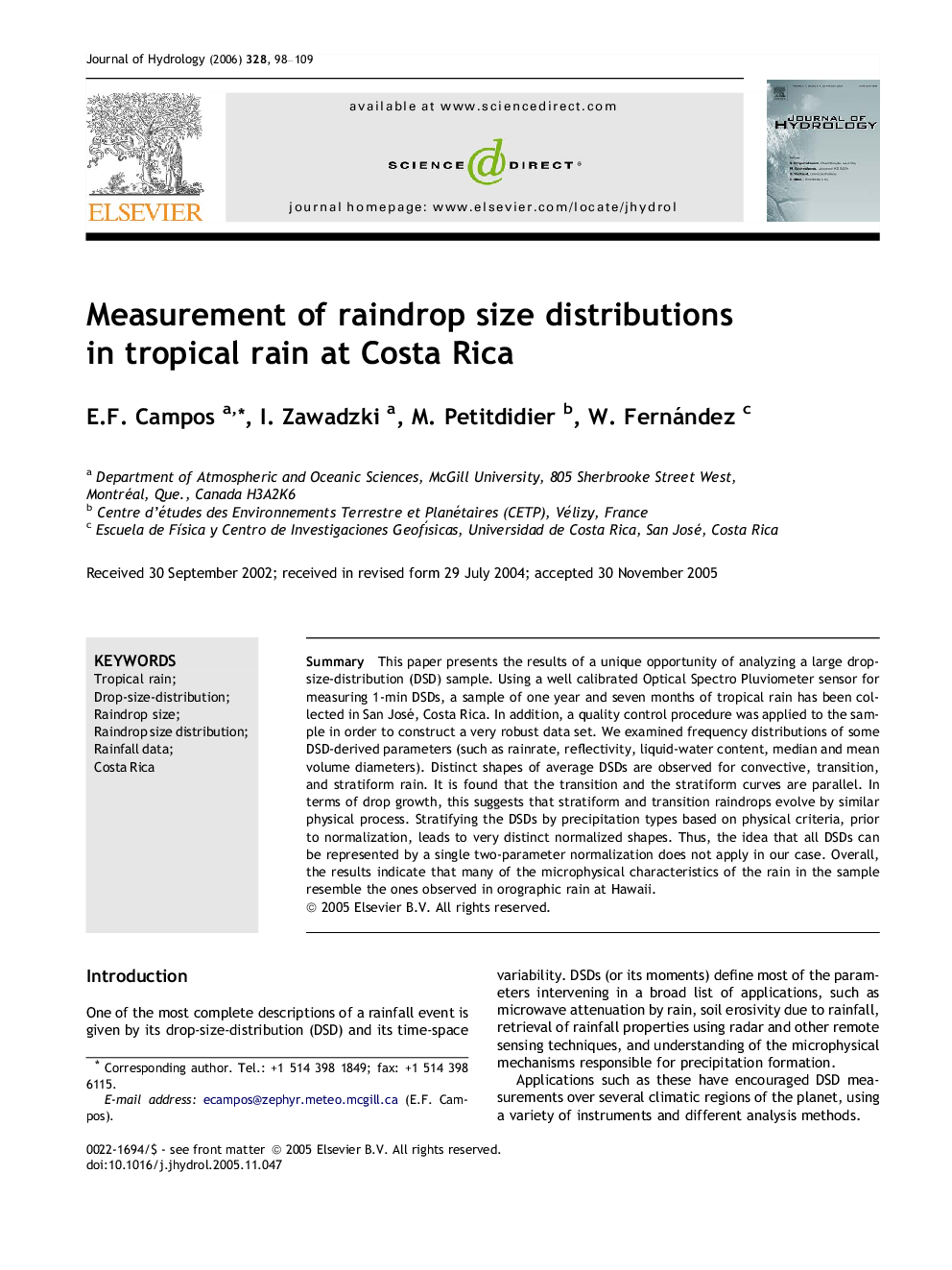| Article ID | Journal | Published Year | Pages | File Type |
|---|---|---|---|---|
| 4580684 | Journal of Hydrology | 2006 | 12 Pages |
SummaryThis paper presents the results of a unique opportunity of analyzing a large drop-size-distribution (DSD) sample. Using a well calibrated Optical Spectro Pluviometer sensor for measuring 1-min DSDs, a sample of one year and seven months of tropical rain has been collected in San José, Costa Rica. In addition, a quality control procedure was applied to the sample in order to construct a very robust data set. We examined frequency distributions of some DSD-derived parameters (such as rainrate, reflectivity, liquid-water content, median and mean volume diameters). Distinct shapes of average DSDs are observed for convective, transition, and stratiform rain. It is found that the transition and the stratiform curves are parallel. In terms of drop growth, this suggests that stratiform and transition raindrops evolve by similar physical process. Stratifying the DSDs by precipitation types based on physical criteria, prior to normalization, leads to very distinct normalized shapes. Thus, the idea that all DSDs can be represented by a single two-parameter normalization does not apply in our case. Overall, the results indicate that many of the microphysical characteristics of the rain in the sample resemble the ones observed in orographic rain at Hawaii.
